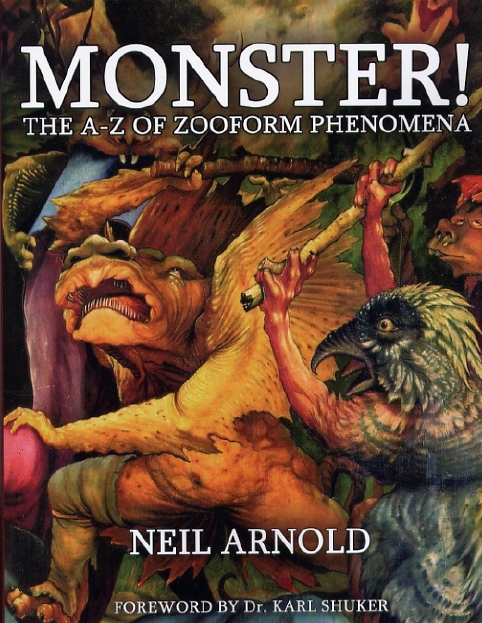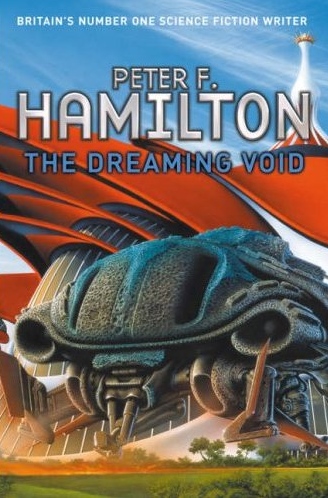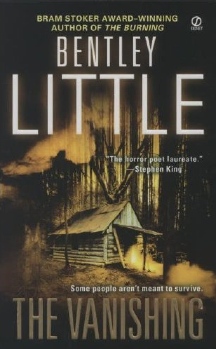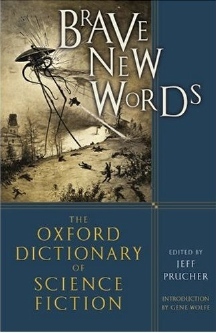|
|
|
|
This Just In...News
From The Agony Column
|
|
07-21-07: Preview for Podcast of Monday, July 23, 2007 : We have the future.
Here's an MP3
preview of the Monday July 23, 2007 podcast for The Agony Column.
Enjoy!
|
| |
|
07-20-07: 'Monster!' by Neil Arnold
|
From the Inner Mind to the Outer Limits
Monsters have all sorts of purposes. The man-in-suit variety chases
bikini-clad coeds through badly-built sets. Shaky video footage supposedly
caught
by an unprepared tourist may document an as-yet undocumented new
species. You may have a gallery of truly human horrors to which you
point when
you use the word monster. Or you may simply refer to a critter described
in a story handed down through the generations, clearly nothing intended
to be perceived as real, more of an exemplar for a moral lesson.
Welcome to the wonderful world of Zooform Phenomena, a term coined
by monster hunter and Fortean zoologist Jonathan Downes, of the Center
for Fortean
Zoology (CFZ) to describe "animals that aren't". The idea
being that we talk about a number of animals and monsters that we know
with certainty
not to exist; let's go with the famous science fiction phrase, "monsters
from the id". These monsters say quite a bit about the humans
who create them and very little about the natural world around us.
They come
from folklore, folk-tales, urban legends, tall tales, and even flat-out
lies told by attention-seeking storytellers. Until now, nobody has
ever sought to even particularly define them much beyond the environs
of the
CFZ.
|
|
Fantastic
in all senses of the term cover art by Mark North.
|
'Monster! The A-Z Book of Zooform Phenomena' (CFZ Press ; May 23, 2007
; $32) by Neil Arnold is a mind-bogglingly complete
and thorough compendium of every zooform phenomena that readers could
possibly imagine and
quite a few more besides. Arnold starts things out with a Foreward
from no less
a luminary than Dr. Karl P. N. Shuker, the man who created the now-standard
text, 'The Lost Ark'. He pulls up the phrase "prefabulous animals" from
a 1957 tome that included the fictitious alongside the fantastic. I
like that word, and I like "zooform" as well. But what I
mostly like is the flexibility with which Arnold defines the term,
which coupled
with
his thorough research offers readers a compendium of creatures the
likes of which this world has never seen before.
I'm talking about the book – for the most part, nobody has seen
these creatures.
And "for the most part" is the key term in the previous sentence,
because as Arnold so carefully notes in his Introduction, some of his zooform
phenomena are indeed likely to be real creatures. Bigfoot, sea serpents,
and lake monsters all have enough documentation to suggest there is or
at least at one time, was a physical creature to correspond with the stories
being told about it. "Things are still out there," Arnold writes, "evading
the pursuit of man, but there are some animal forms which can never be
explained, let alone caught on film or in the nets of some fisherman. Some
are mere ghosts ...should you believe in such things, while others take
on the form of animals, but quite simply, are some are something else entirely
whether ethereal, supernatural or part of tribal lore ... 'Zooform phenomena'
straddles a fine line between the flesh and blood, and the completely surreal.
It also crosses that line, stepping from the mists of folklore into the
bedrooms of teenagers, and from there it slinks into the darkness of the
human psyche, and then thousands of years backwards, into our culture." Arnold
is careful to point out that, "These creatures are not just the
spirit of Aunt Agatha's dog for example, or mass hallucination. Some
of these
things are being seen many, many times, by many, many people. Other
monsters are being seen once, but making a strong, powerful impression,
whereas
other apparitions are like whispers on the tongue, and fade into obscurity."
These are the creatures that exist as story.
These are the demons that we create to frighten ourselves into reasonable
behavior, to keep us huddled around the fire in the night.
These are the monsters from the id. They are the parts of ourselves we'd
prefer not to know exist.
But should we care to find out, Arnold has done us the favor of assembling
381 large-format pages of entries describing these monsters, or at
least recording how they were described, even if ever so briefly. The
entries
include the name, the definition or description, which may very in
length from a single phrase to a multi-age essay. You get "star" rating,
one * suggesting that the creature is a hoax or legend, up to four stars, "a
creature with real staying power and lasting effect." There usually
follows a "ZC" or zooform comment on the phenomena. The entries
trend towards very short and often dryly humorous descriptions, such
as:
"
AATXE – This creature is a giant bull from the mythology of Spain.
It is said to haunt various cave systems of the Pyrenees, but takes
to the night when a storm is approaching. This spiritual animal is
related
to the Aatxegorri, (see below) this being a red steer.
*
ZC: This apparition is regional folklore and could be considered
a classic symbolic figure, often representing bad weather."
The audience for this book should be quite considerable. Anyone interested
in story, myth, legend or folklore will find a knock-your-socks-off
collection of stories, story kernels, myths and local and regional
folklore. Writers
looking for material need look no farther; here's your inspirational
source for any story you care to craft, especially since so many of
the entries
are more along the lines of suggestions than the more fully-blown out
entries, such as those on Bigfoot or my personal favorite, The Monkey
Man. The illustrations
run the gamut from simple line drawings to reproduced etchings to full-page
commissioned artwork. Some entries quote goofy news stories, others
impressionable teenagers.
All of them originate in human language. Each entry a little gem, a
shard from the mind of a man or a woman or a child, polished, preserved
and put
on the printed page for you to gaze at. These monsters may not be real,
but they don’t need to be. Our language brings them into the world.
|
| |
|
07-19-07: Peter F. Hamilton Wakes 'The Dreaming Void'
|
One Man's Dream is Another Man's Planetary Romance
|
|
Space
opera, in case you didn't guess. |
'The Dreaming Void'
(Pan MacMillan ; August 3, 2007 ; £18.99)
has all the things you hope for from a novel by Peter F. Hamilton.
It's set
in 4000 AD in his Commonwealth Universe, so you've got a wide-screen space
opera backdrop with plenty of detail in place. That means space navies,
inter-species conflicts, and ancient artifacts. You've got aliens, lots
of 'em and weird ones to boot.
But this is the first novel in a Peter F. Hamilton space opera trilogy. "Wait,
there's more," is not just a motto, it's a religion, and probably
one with millions of adherents spread throughout the known universe. Hamilton
heads fearlessly where other science fiction writers have gone before,
addressing notions of the Singularity as regards human civilization, then
takes one Hamiltonian step beyond to put aliens in mix. It doesn't have
the sort of cutting-edge effect as when either Charles Stross or Cory Doctorow
talks about the concept. Hamilton's not up to that sort of thing. No, it
just makes his ridiculously complex universe even more complex and correspondingly
more fun.
Did I mention religion earlier? My canvas is not nearly so wide as Hamilton's
and even I'm needing a map. The setup for 'The Dreaming Void' is classic
Peter F. Hamilton. You've got your Commonwealth, AD 4000 and everything
is pretty much hunky dory. Well, other than the galaxy-destroying artifact
at the center of the galaxy. That could be a bit of a problem. They call
it "the Dreaming Void" and they think it's a black hole of some
sort, though there appears to be a technological aspect as well. Fortunately,
it seems to be eating the galaxy slowly and the Commonwealth has some 4
billion years to suss out what's what.
Unless the members of the religious cult the Living Dream have their way.
They think that heaven lies within the Dreaming Void, and intend to create
themselves up in starships and plow on in. The only problem is that most
of the rest of Commonwealth believes that doing so will just make that
ol' Void hungrier and trigger a much faster finish to it's galaxy eating
intentions. Not surprisingly, lots of folks, human and alien, don’t
want this so-called Pilgrimage to take place. What's a nearly omnipotent
Commonwealth to do?
Quite a bit, as it happens and as anyone who has ever read a Peter F. Hamilton
novel can attest. Cat's paws here, demi-humans there, post-humans incarnating
themselves in old flesh for old times' sake, Slug-like blob aliens floating
on saucers and making quite specific threats of interstellar war. It's
all in a couple of years' work for Hamilton, who is in fine form with his
latest novel. Now here it comes again:
Wait, there's more.
In this case, it more has to do with the Living Dream, started by a human
who, coming near to the Void, began to have a series of dreams that described
what the Living Dream folks call heaven, with different physical laws,
the whole "other universe" shebang. The catch is that some umpty-ump
pages into the novel, readers get to read one of the prophet's dreams and
damn if those dreams don't read like a Peter F. Hamilton planetary romance.
An alien world where a boy is transformed into a young man by virtue of
his talent and training. Exciting scenes of peril and payoff.
I'm going to digress for long enough to mention that Hamilton's 'The Reality
Dysfunction' was my second step in returning to science fiction after Alastair
Reynolds' 'Revelation Space'. A good friend at work loaned me the US paperback,
which I read enough of to know I wanted the UK hardcover from whence it
came. And there is a scene in that novel wherein some folks are extracted
from a planet while being pursued by Lovecraftian undead that to this day
remains crystal clear in the shattered remains of my tiny brain. Hamilton
is capable of superb writing.
... Which you shall find in 'The Dreaming Void', particularly in the passages
that are the dreams of the prophet. They're not in the least bit dream-like;
as I mentioned earlier, they are a perfectly pitched story-within-a-story
planetary romance. So what you have here is a Peter F. Hamilton novel where
a Peter F. Hamilton novel is a dream. It's a fun concept and Hamilton's
execution is simply wonderful.
You have to know what you're getting into with a Hamilton space opera trilogy.
If the first book is n pages, then book 2 is going to be 1.3n pages,
or
n1 pages. And book three is going to be 1.3n1 pages.
Given that 'The Dreaming Void' is a nice even-steven 600 pages, this makes
book 2 780 pages and
book 3 1,104 pages. That's some 2,394* pages of reading. (Actual page count
may vary, not historically accurate information, but it feels that
way.) So
ask yourself: Are you willing to read that much space opera? Remember it
includes
the
Singularity and lots of great action set-pieces. They start early and stay
late. Hamilton is playing to his strengths in 'The Dreaming Void'. And
Macmillan is as well, with the usual Jim Burns to-die-for cover art. Think
of it this way; one man's dream is another man's space opera. With 'The
Dreaming Void', no matter where you fit into that equation, you're a winner.
|
| |
|
07-18-07: Bentley Little Appears With 'The Vanishing'
|
The Demon You Know
|
|
OK,
OK, I'll take the mass-market PB without complaining. It
seemws to be working, as Little keeps getting published.
This is good!
|
We love our safe and happy America. No matter where you go, there are cops
nearby to protect you from criminals. The Army keeps us safe from invasion,
and no matter how much news we see about this or that terror, generally
we worry more about our bank balances than random bombings. We live in
a Great, Big Beautiful Tomorrowland today. The boundaries of our world
are well known, clearly defined and generally unthreatening.
Unless it's all just a veil. Bentley Little would have you believe just
that. Our little world, with all its science and commerce, we're like busy
little ants building nests that have no idea said nests are resting on
a nuclear waste site, a churning cauldron of supernatural terror against
which everything we know is one-hundred percent useless. Little has specialized
in re-imagining America, in taking everything we know and giving it a sinister
supernatural spin. His latest novel is 'The Vanishing' (Signet / Random
House ; August 7, 2007 ; $7.99), and once again, Little is directing us
to look at the man behind the curtain. Only it's not a man, and there's
more than one of them.
Little's writing is so transparent and easy to read, it's difficult to
realize just how much skill goes into creating his horrific visions. In
many ways, Little riffs from crime fiction, peppering his novels with events
straight out of the headlines rendered in the sort of crisp prose that
you might find in a police procedural. We're used to these daily doses
of horror. They keep the 24-hour cable networks in business. Bus crash
in the Midwest, 5 dead? CNN headline news. Annoying rich father turns house
into slaughterhouse? Works perfectly for page 2 filler in your metro newspaper.
Social worker unearths hellish conditions in an otherwise bland suburban
setting? Maybe a Lifetime Movie Network movie of the week in that one.
All the little horrors that surround us, just waiting to be joined by the
inventive mind of Bentley Little.
'The Vanishing' is sinfully easy to read. It's the kind of book to make
you call in sick to work, so that you can lay on the couch in the living
room and finish it. Carrie Daniels is the social worker, Brian Howells
is the reporter, and between the two of them, they'll discover more monsters
than you can pack into a Hammer Horror movie marathon. This is one of the
reasons I really like Little so much, because he manages to seamlessly
integrate the real-world, ripped-from-the-headlines events with, well,
monsters. And not just no-see-'ums, but up-front, wormy, scaly monsters
and super-creeps. And he does this so well, from the natural to the monsterific,
that you really don't notice where one ends and the other begins. And given
the upshot – all the little and big ways we die here in the US of
A – we might as well opt for the monster explanation, right?
But again, that's not all that Little is up to in 'The Vanishing'. In addition
to the toe-tapping present-day terror, Little enriches his novel with a
well-wrought (and equally monsterific) historical backdrop. It's not enough
that present-day America be rotten with monsters. Nope, we've got to have
an America that has always been rotten with monsters. I have to grudgingly
admit that in my heart of hearts, I think this may be the case. And as
a reader who wants to see this average, everyday horrific world turned
into a wildly supernatural horrific world, I'm happy to see Little do so.
Individually, Little's novels are fun reading, the sort of work we used
to look forward to on an annual basis from bigger-name horror writers.
But taken in toto, Little's oeuvre offers a rather large and unsettling
vision of America the Horrific. O terror filled, under Satan's skies. My
country, sweet land of liberty.
For monsters.
|
| |
|
07-17-07: Jason Rodriguez Edits 'Postcards'
|
'True Stories That Never Happened'
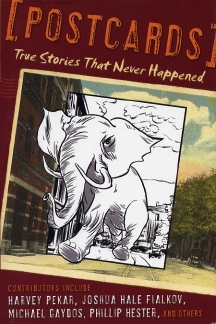 |
|
| Watch
out for rampaging elephants. |
Here is an idea whose time has clearly come. Jason
Rodriguez tells
us in the introduction to 'Postcards: True Stories That Never Happened'
(Villard
/ Random House ; July 17, 2007 ; $21.95) that it was all his girlfriend's
fault. He took her on vacation and she wanted to go shopping. He
sighed and whinged his way through the shops until she came upon a
box of postcards,
many of them previously mailed. Sifting through other people's memories,
he had the inspiration for 'Postcards'. All he had to do was to give
a set of writers and artists the postcards he'd 'Found' Davy Rothbart-style
and ask them to tell stories suggested by the often cryptic messages
on the cards. Brilliant, really, assuming that introduction itself
is not a true story that never happened.
Whatever the verity of the origin of the book, the real concern is
whether or not the stories within are worthy, and it won’t
take readers long to find out that they are indeed every bit as powerful
as the dusty memories
evoked in a perhaps mythical thrift store. Brevity is the watchword.
You can't cram many words onto the back of a postcard, and the contributors
offer sixteen stories in 180 pages. The key is that the contributors
have
by and large managed to capture the condensed intensity of emotions
that one can experience when peering at a tiny bit of the lives of
those one
has never known.
'Tic-Tac-Bang-Bang', with a story by Stuart Moore, illustrated by Michael
Gaydos, is a perfect example. The postcard is from 1909, with the inscription: "look
under stamp I was in town today. Hope your not in a fight last night Your
Friend [unreadable]". Moore and Gaydos turn this in to a wonderfully
rendered story of conmen, crime and reconciliation. Or the powerfully conceived
and illustrated 'blue' that opens the collection, with a story by Chris
Stevens and illustrations by Gia-Bao Tran. It is simply a transcendent
look at childhood and packs a punch that will quite likely sell a few copies
of this book to those lucky enough to browse through it in the bookstore.
Harvey Pekar rounds out the volume with a life told in postcards – his
life, naturally.
'Postcards' is one of those perfect little books that you might well
miss in the bookstore. I haven't a clue where it will get shelved,
though experience
suggests that you'll have to look for it with the graphic novels. But
it should be filed with fiction. With non-fiction. Alas, no pigeonhole
yet
for "good reading".
|
| |
|
07-16-07: A 2007 Interview With Jeff Prucher
|
"It's hard
to trace the lines of influence because the boundaries are so loose."
|
|
"...that
has such people in't!"
|
I remember the original
call to arms that eventually resulted in 'Brave New Words', the historical
dictionary of words created for and by science fiction edited by Jeff
Prucher.
A post to rec.arts.sf.written requesting that those of us who
had older editions of books be on the lookout for the earliest appearance
of words created by science fiction. There were some specific requests
as well; I seem to remember something about 'Dune'. And while 'Brave
New Words' is certainly not the first book that had its origin in Usenet
newsgroups and won’t be the last, it is clearly a special case.
The original newsgroup posting, Prucher told me in our interview, led
to the OED Cite project, a website maintained by Prucher and some others.
And as the Cite Project gathered momentum, Prucher himself was drafted
by an OED editor who suggested 'Brave New Words'. Welcome to the brave
new world of science fiction lexicography.
Prepare for some satisfaction and disappointment. I have to admit feeling
the latter upon learning the impact of 'Star Trek' on our language. But
on the other hand, as I read through the dictionary – probably
the only dictionary I am going to read cover to cover, ever – I
found myself fascinated and satisfied by the contributions I did see.
It's always been my contention, for example, that H. P. Lovecraft was
a major influence on science fiction, not just horror. To my mind, he
originated a lot of the tropes we find modern science fiction, and 'Brave
New Words' bears this out. And it's pretty interesting to see how important
the fallen-out -of-favor are, to wit E.E. "Doc" Smith. I remember
reading these in junior high. I thought they were incredible and convinced
a teacher to read them as well.
He was less impressed. The concepts were "cool" he admitted,
but the writing, well ...
Good for junior high kids; not as good as Heinlein.
Still, I look back on those books with great fondness, and now, an understanding
of just how much Smith had to create. Prucher and I talked about how
difficult it is to untangle the concept behind a word from the word itself,
how science fiction writers implant their visions in scientists – unless
they are the scientists. Prucher is a remarkable scholar and this book
is a must-buy for any dedicated reader of science fiction, or anyone
interested in futurology, as the language of science fiction is already
there, waiting for us to grab off the shelf when the future comes along
with something like a "spaceship" or a "worm". Get
ready to explore the history of the words you think you know in either
MP3 or RealAudio format. Words that themselves were firmly in the realm
of science fiction not so long ago. Waiting to arrive. Out there right
now, there are words that will describe our future. We'll use them every
day. Once we know what they mean.
|
| |
|
|
dd

